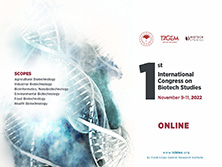THE EFFECTS OF FEEDING TYPE AND TIME ON FATTENING PERFORMANCE OF HOLSTEIN BULLS FATTENED DURING DIFFERENT SEASONS
In this study, 28 Holstein bulls, at an average 8 months of age, kept in semi-confinement type of barn and managed under loose housing condition, were used. The fattening period lasted 168 days. A concentrated food and roughage were separately offered in the day and night-time manger based on the sunrise and set time to the first group of animals. The second group of animals was fed with the ration composed of 70% concentrate feed and 30% straw. Each group animals were fed to be ad- libitum
It was concluded that there was no problem for consumption of the concentrate and roughage given separately and ad-libitum to Holstein bulls, which covered their physiological requirement easily under the different climatic conditions with this style of feeding; therefore, the fattening performance was affected positively. The consumed daily ration during the night was as much as that of during day and even more than that of the day to adapt extreme climatic conditions.
Keywords : Fattening; Holstein; feeding type; feeding time















